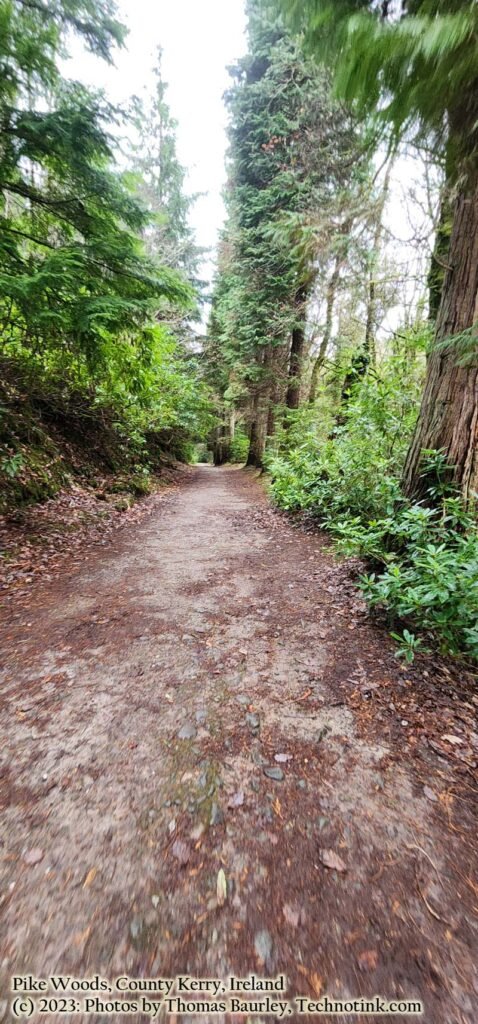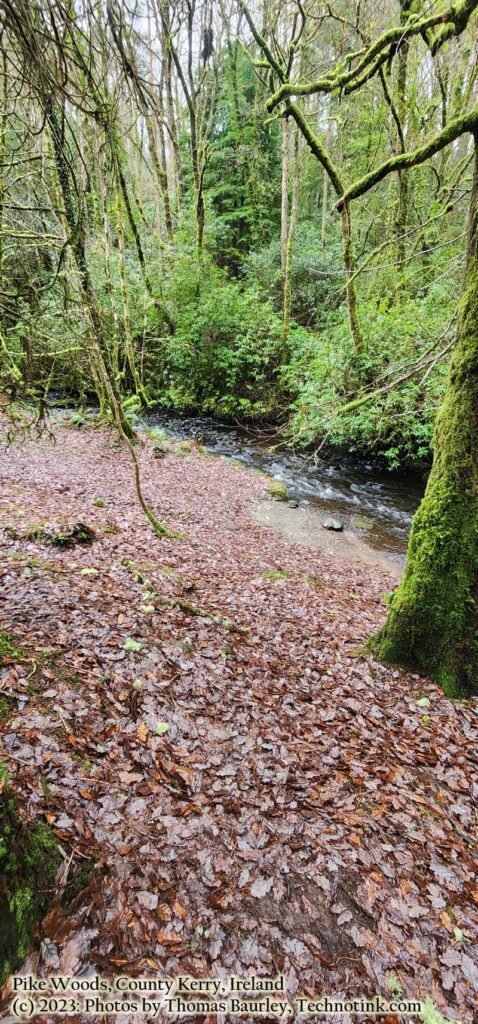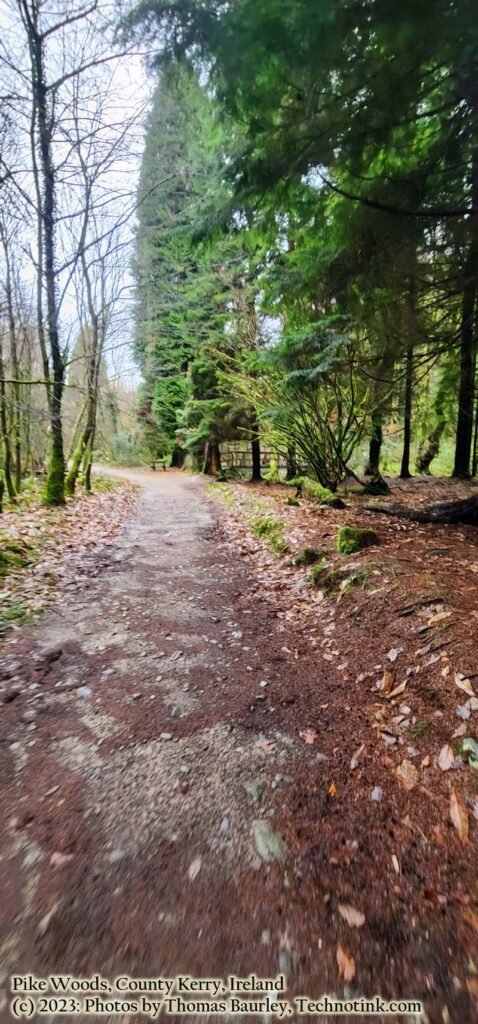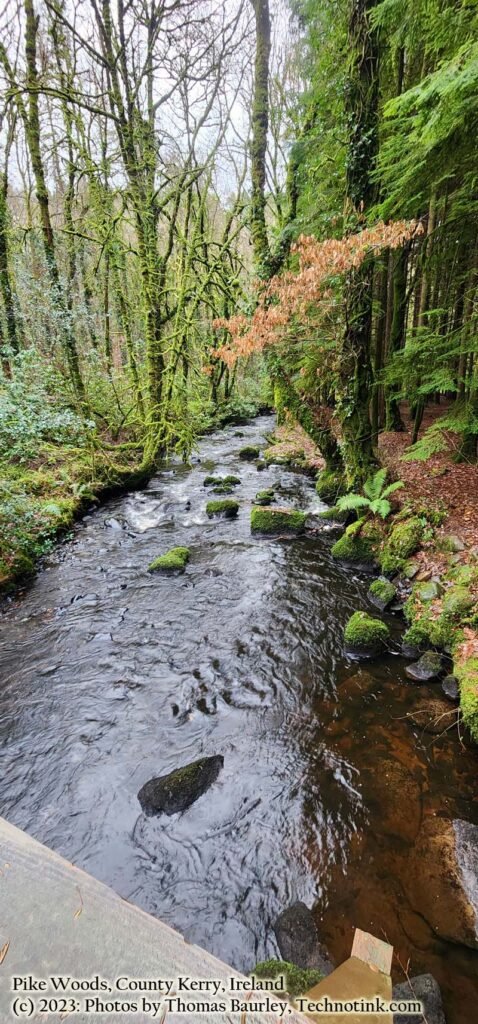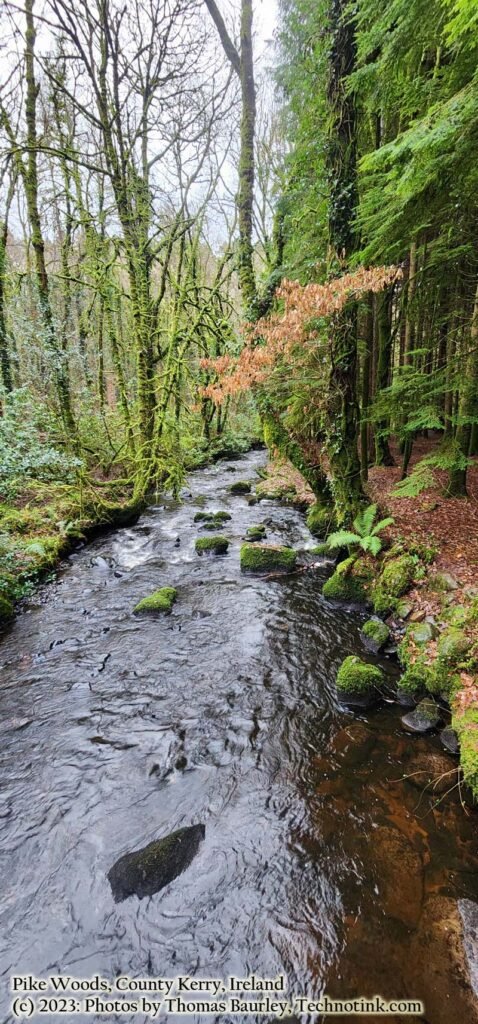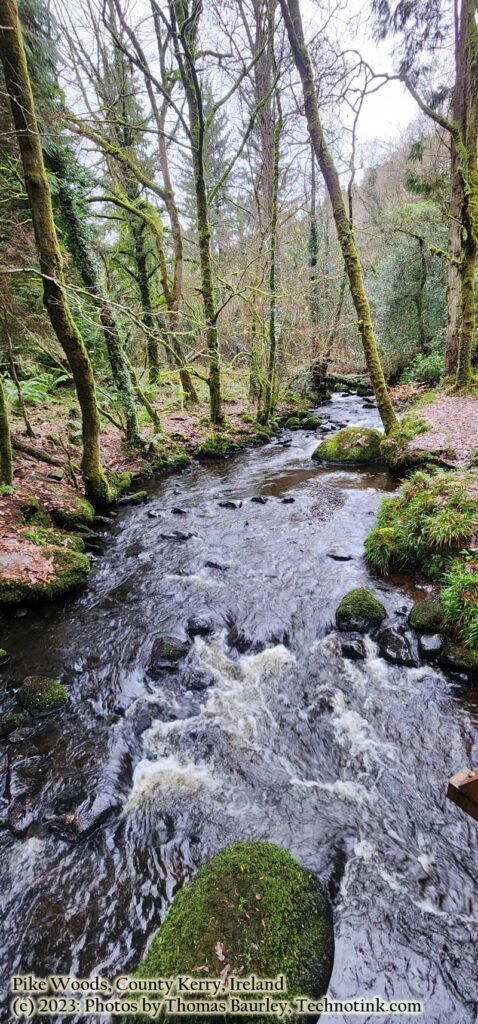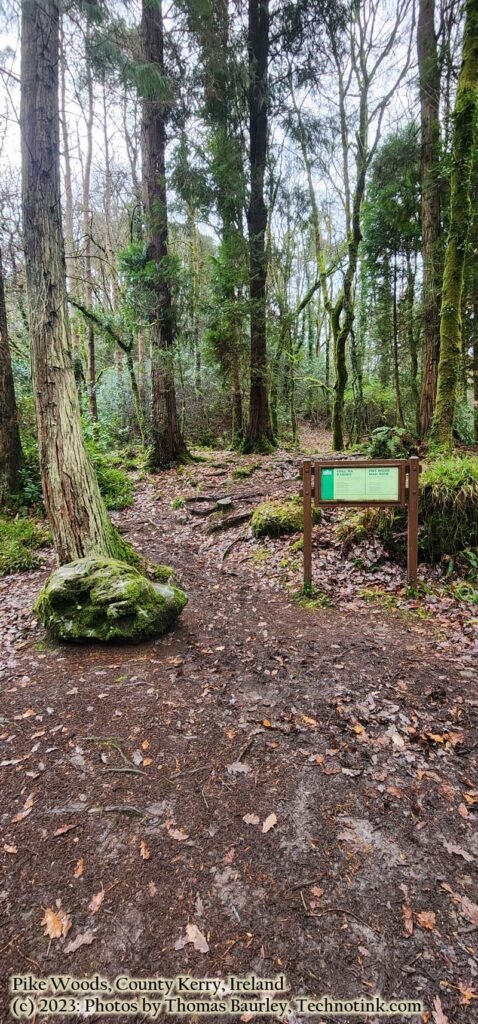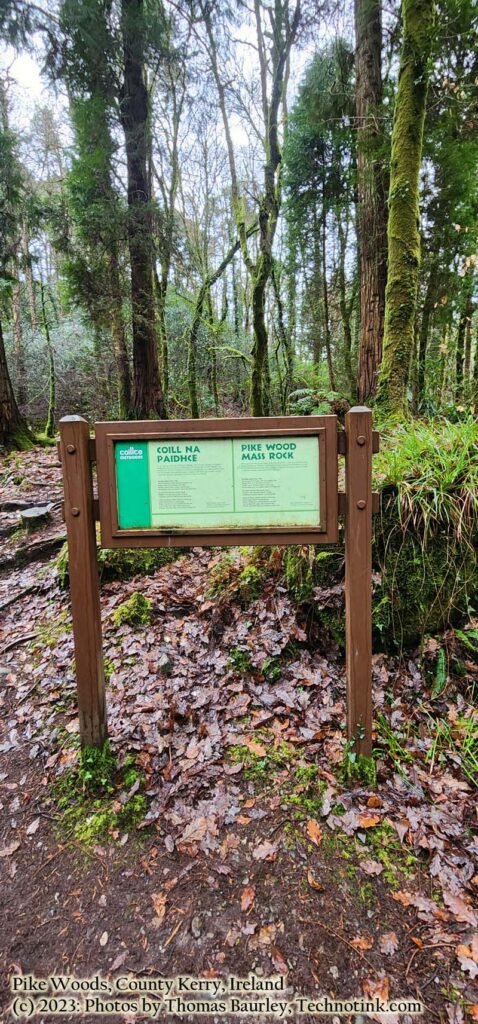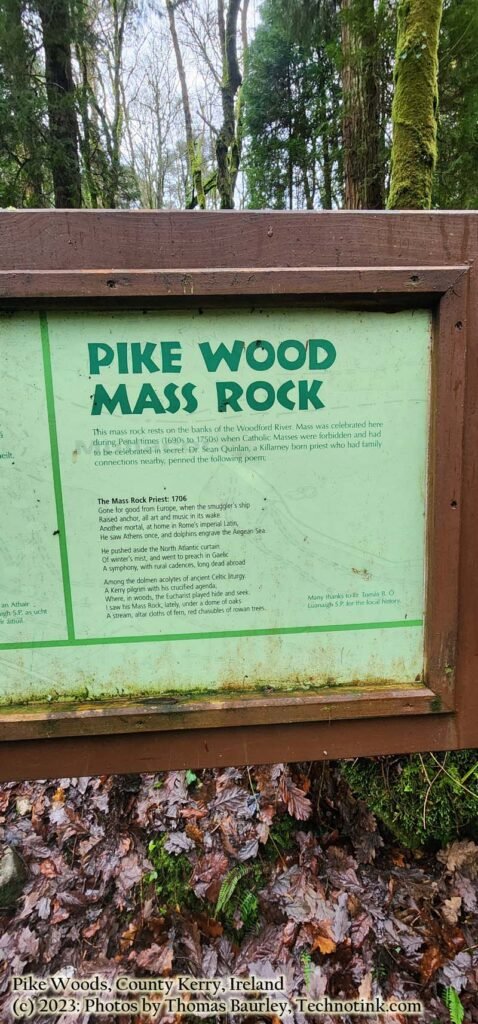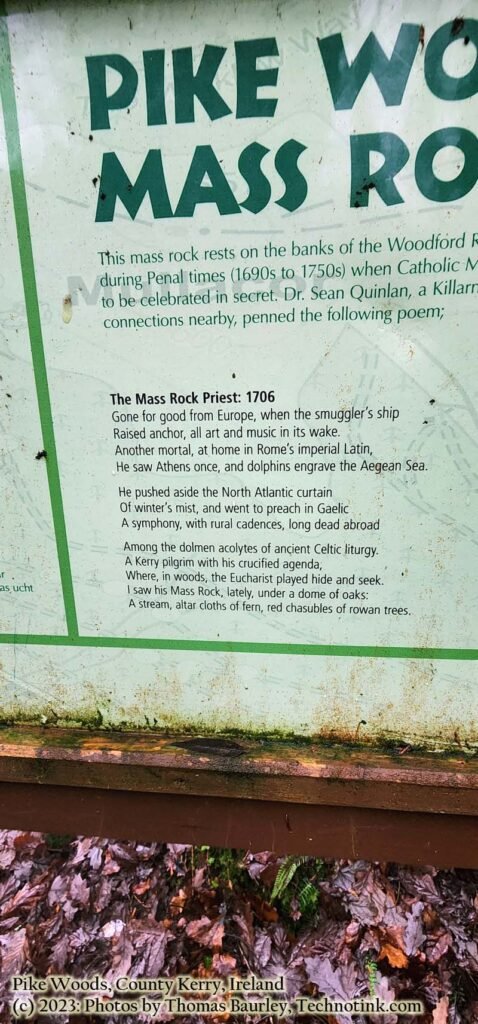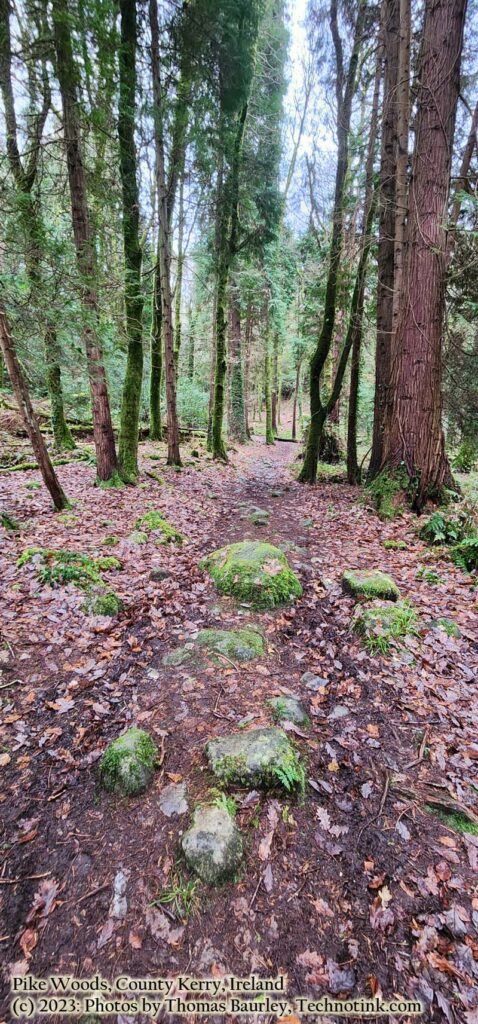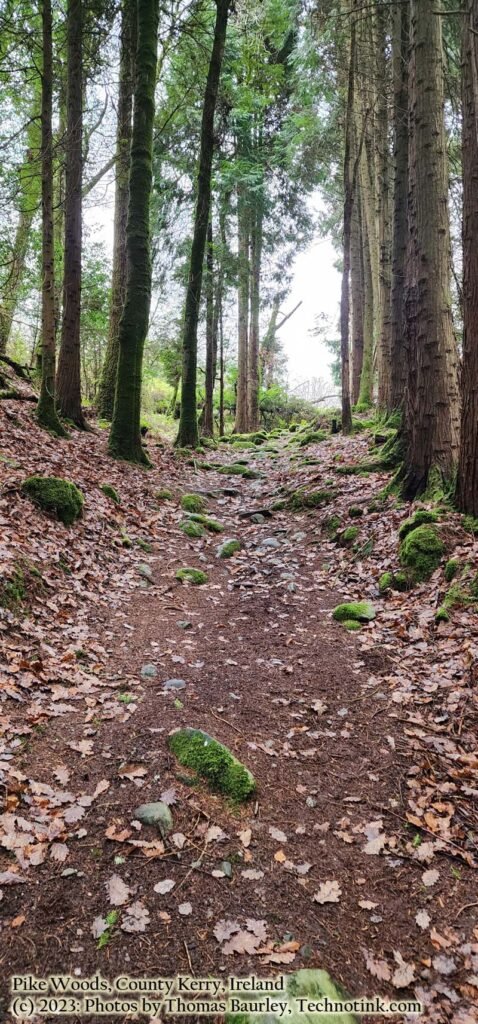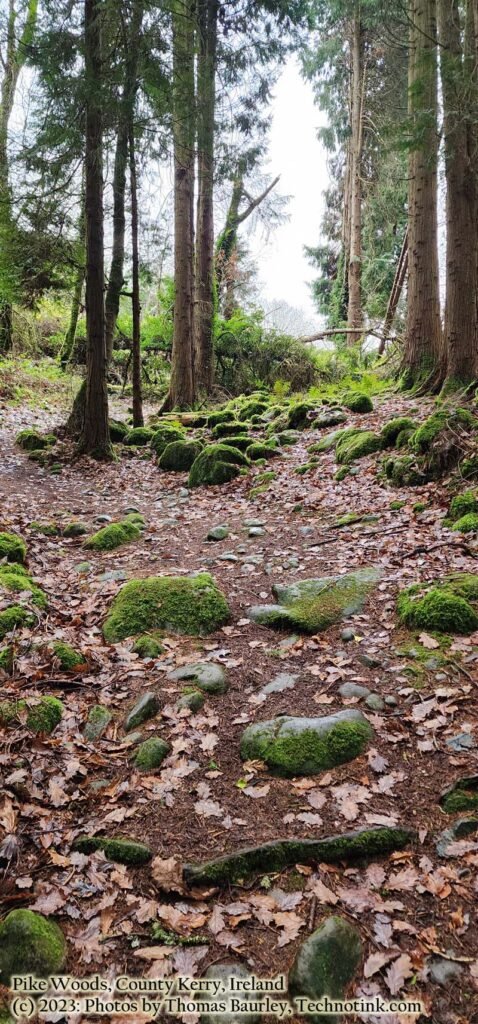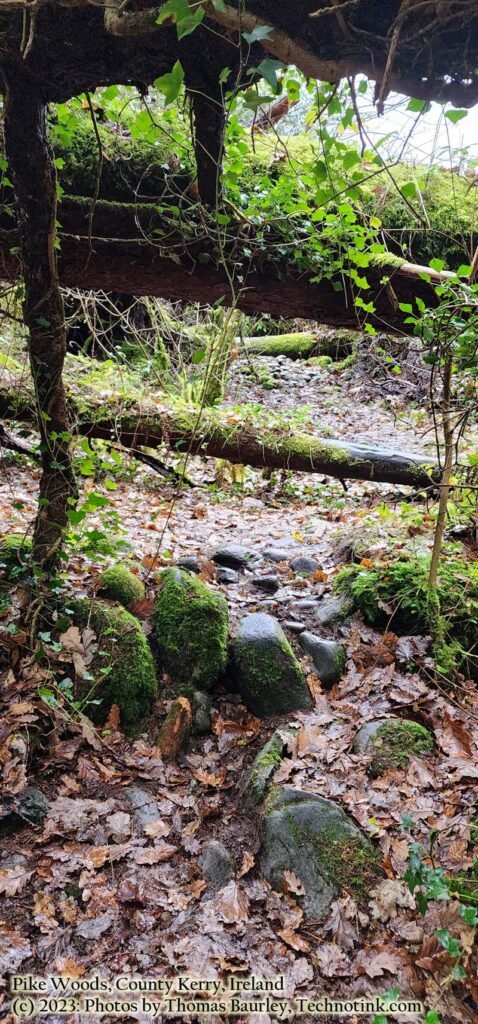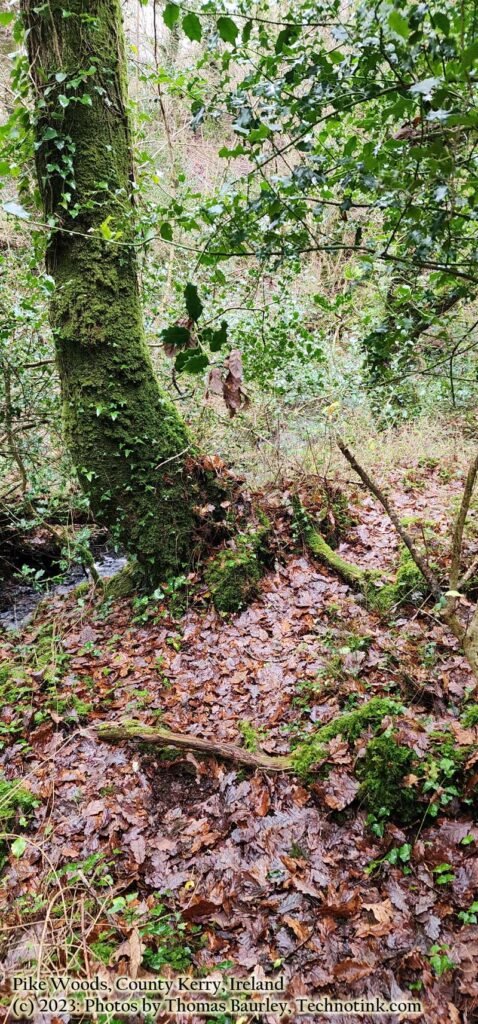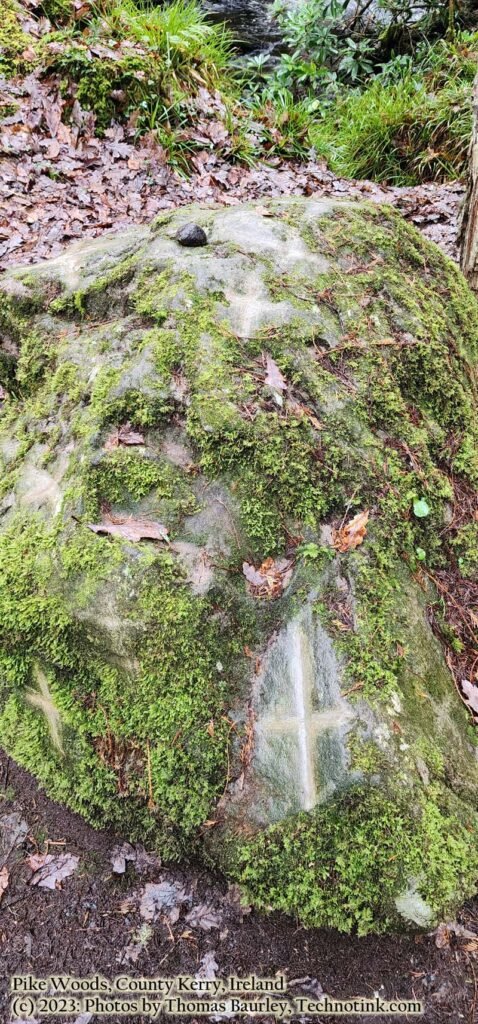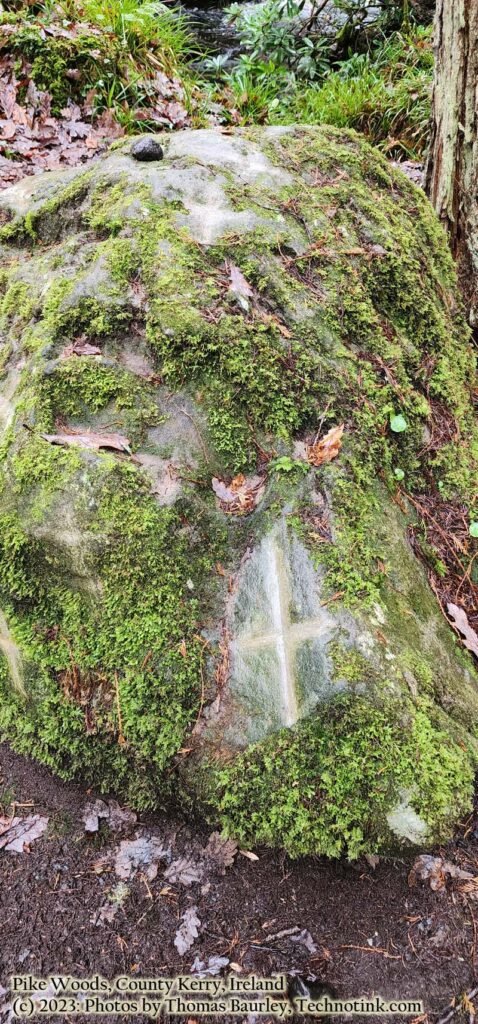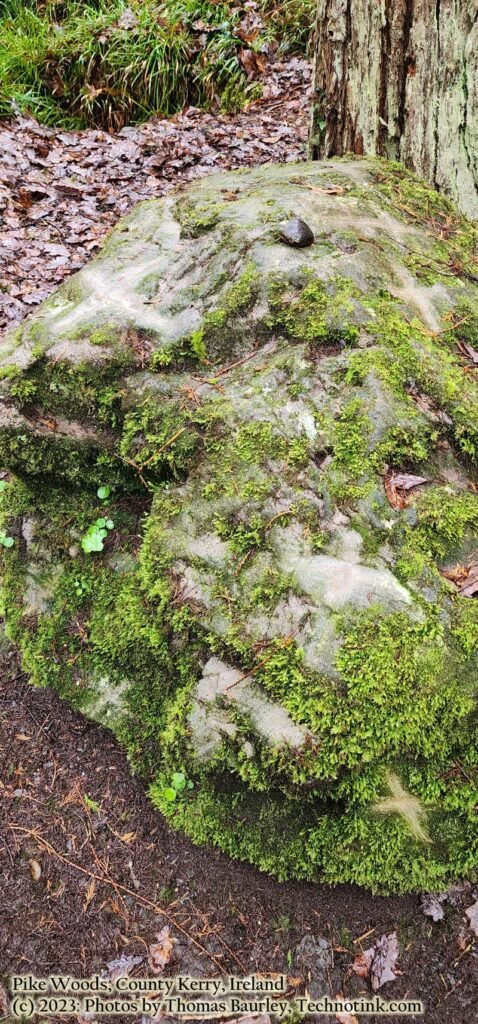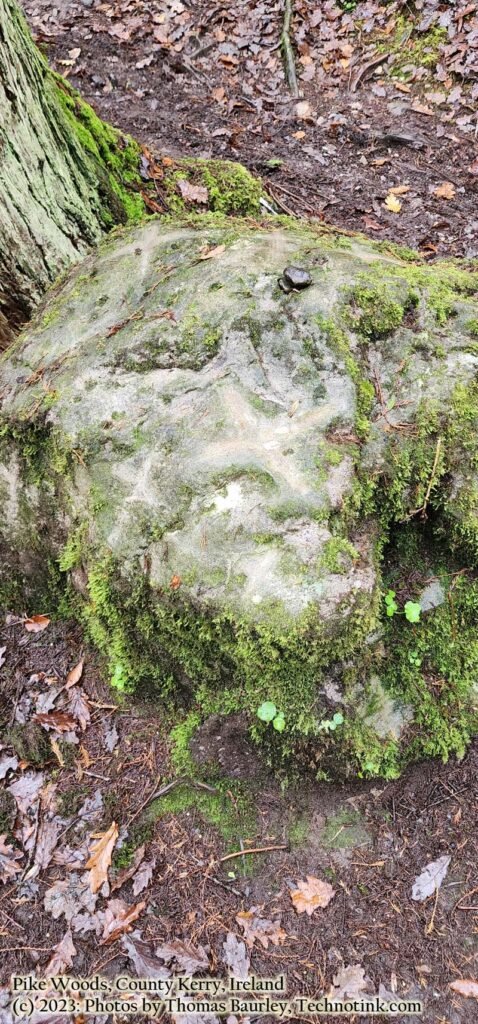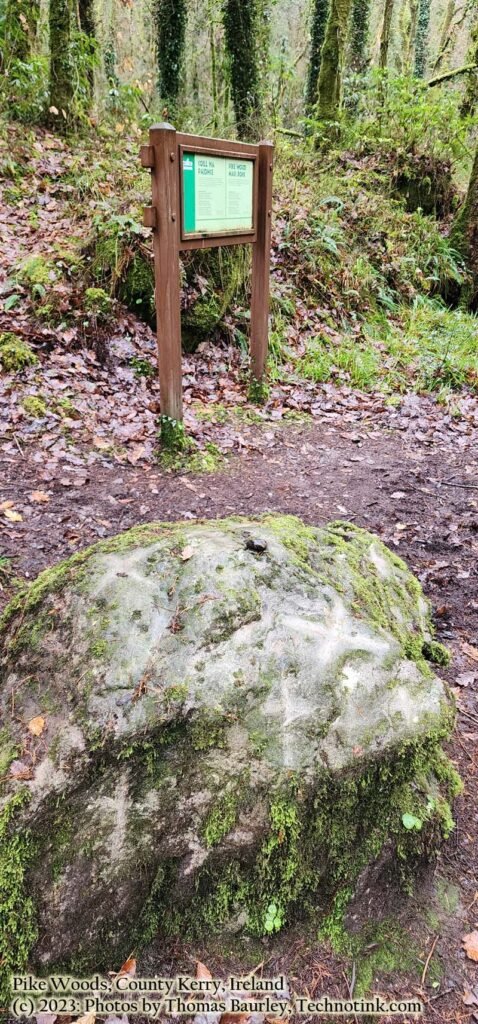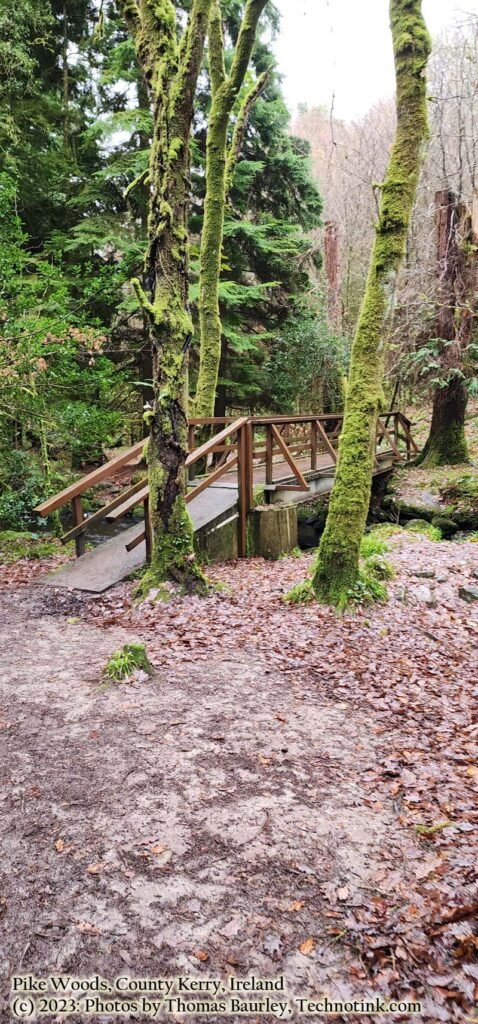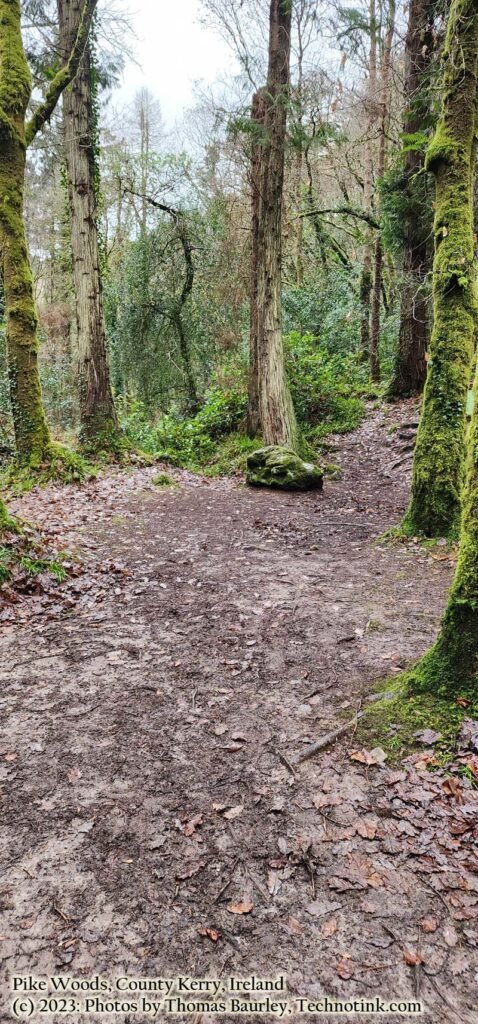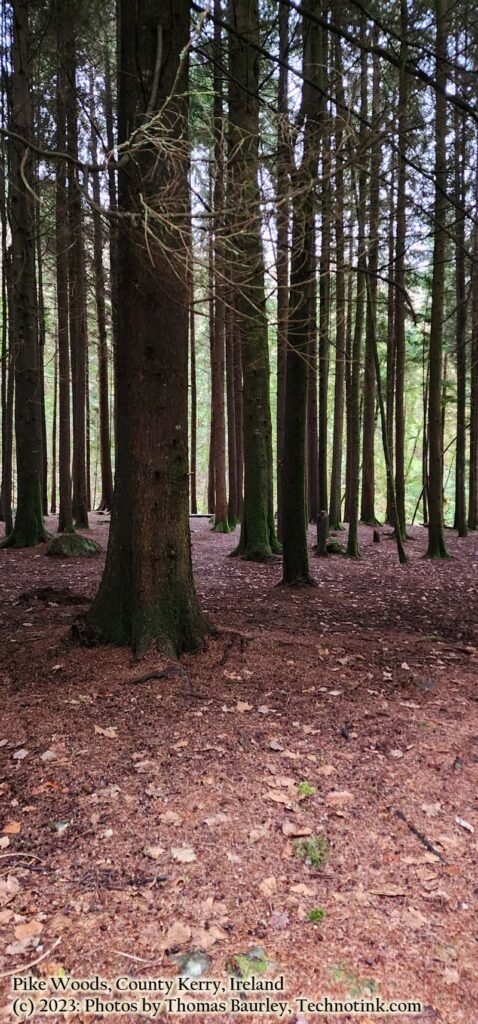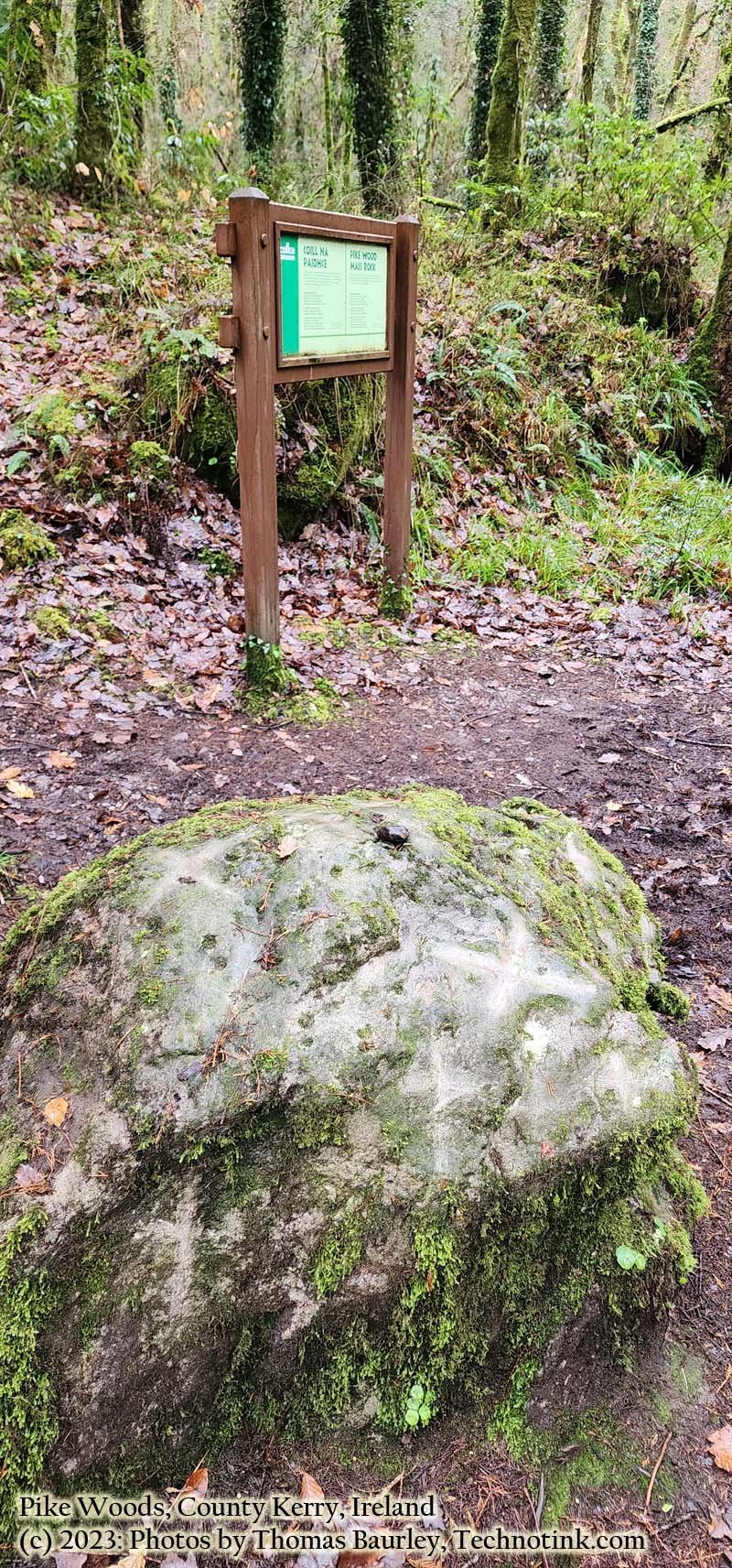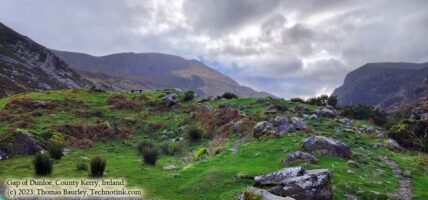by Thomas Baurley: 19 February 2024
Mass Rocks: Generally, a “Mass Rock” was used as an altar in the mid-17th century for Catholic masses in Ireland and Scotland or regions where the Protestants persecuted the Catholics. In Irish they were called Carraig an Aifrinn. These were popular occurrences during the Penal times (the 1690s to 1750s AD) (or 1690-1750 C.E.). England’s King Henry VIII started a massive religious persecution of the Catholic Church in Ireland, forbidding Catholics from holding mass. This ended during the Catholic Emancipation of 1829 CE. During this time, the Irish Catholics “clung to the Mass, crossed themselves when they passed Protestant ministers on the road, had to be dragged into Protestant churches and put cotton wool in their ears rather than listen to Protestant sermons,” stated Marcus Tanner in his 2004 book “Last of the Celts.”
As a result of persecution, clergy and their congregations sought out remote, hidden, isolated locations to hold mass and other ceremonies to observe Catholic Mass. Many of these locations were marked by large stones with etchings of a cross marked into them. It was extremely risky to be caught practicing during the persecution, resulting in harm, especially during Cromwell’s campaign and the Penal Law 1695. Under the 1704 Registration Act, Bishops were banished, and priests had to register to preach. “Priest hunters” were employed and set out upon the countryside to arrest unregistered priests and Presbyterian preachers under the Act of 1709.
The Penal Act made laws and enforcements based on:
- Restrictions on how Catholic children were educated
- Bans on Catholics holding public office
- Bans on Catholics serving in the Army
- Bans on Catholics voting
- Bans of Catholics inheriting Protestant lands
- Bans on celebration of Catholic Mass
- Execution or Expelling Catholic clergy from the country
- Taking Catholic land and distributing it amongst British Lords
- Dividing inherited lands equally between children to reduce land size held by individual Catholics
The Mass Rocks of Ireland
Again, while some occurrences are found in other places in the Western World with archaeological cross glyph remnants of crosses etched into stones, the “Mass Rock” concept is primarily found in Ireland and some occurrences in Scotland. It is defined as a “rock or earth-fast boulder used as an altar or stone-built altar used when Mass was being celebrated during the Cromwellian period (1650’s) and Penal times (1690-1750), with a recurrent use during the Covid-19 pandemic of 2020-2022. Many of these rocks/boulders often possess a inscribed or scratched/etched cross into the stone. (Archaeological Survey Database of Ireland) These are found in isolated places where religious ceremonies such as the Catholic Mass would be celebrated by the congregations, often in secret. Starting with Oliver Cromwell’s decimation of Ireland followed by William the III’s victories at the Boyne and Limerick under the Penal Laws, it was a dangerous time for the Catholics.
The infamous “Cathedral Cave” at the Isle of Eigg in Scotland is a good example. In 1698, the Inner Hebrides was predominantly Catholic, and the laity secretly attended mass at a Mass stone inside a large high-roofed coastal cave known as “the cave of worship.” These sites, too, have “mass stones” or “mass rocks” called Clachan Ìobairt, meaning “Offering Stones.”. These are remnants from when Roman Catholic priests were outlawed in Scotland.
Mass rocks had symbols of the cross either carved, scratched, or drawn upon them. Sometimes, a stone would be taken from a church ruin, brought to an isolated location, and have a simple cross carved at its top. This would mark the location of these secret masses.
Often held at night, the celebrants would trek out to the Mass rock in darkness with the clergy. They would kneel on the ground before the mass rock while others stood guard. A curtain was often drawn around the makeshift altar upon which a book, tablecloth, wine, water, and bread would be placed. The curtain would hide the identity of the person offering the Eucharist.
In addition to remote locales in the woods, cross-etched stones can be found at holy wells and graveyards, other locations where mass was found to be held.
Much historical and urban lore is associated with mass rocks, ranging from miracles to ghost stories. In the story of the widow’s hunger, cures, miracles, and protestant neighbors hiding or helping priests, the priest cannot stop for any reason with mass, or they’d follow in the tragic death of being shot or killed at the moment of transubstantiation. According to author Tony Nugent, the last Roman Catholic Priest to be killed at a mass rock was in 1829 at Inse an tSagairt, near Bonane in County Kerry. He states in his 2013 book Were You at the Rock? The History of Mass Rocks in Ireland that the priest was captured by a local woman and her five accomplices who ran a nearby shebeen splitting the 45-pound bounty. They beheaded him at a house near Kenmare, taking his decapitated head to Cork, and were denied the award because the Catholic Emancipation had just been signed into law, so they threw the head into the River Lee.

By the late 17th century, many were moved into thatched Mass houses. The Archaeological Survey of Ireland maintains a database for pre-1700 sites, and the National Inventory of Architectural Heritage maintains one for post-1700 sites. In 1979, the Pope recognized the importance of Mass Rocks as a historical reminder of the past persecutions that the Irish faced. After these outdoor sites stopped hosting open-air masses, they continued to have some use for pattern days and Christmas. Many of these sites were re-used when the 2020-2022 COVID-19 pandemic outlawed indoor gatherings, so many returned to mass rocks to celebrate mass. They are often used today for celebrations and Mass. Today, it is commonplace to find celebrations at Mass Rocks on June 20th for the Feast of the Irish Martyrs.
Mass Rock Sites:
Pike Woods Mass Rock, County Kerry, Ireland
A 23-hectare compact wood on the outskirts of Killarney, County Kerry, Ireland. Within a mature stand of mixed conifer and deciduous trees such as Sessile Oak, Ash, and Scots pine. Woodford River flows through Pike Wood, creating a microclimate that encourages numerous plant species to grow and critters to dwell. A “Mass Rock” can be found midway through the forest as an early 16th-17th century location for secret Catholic Masses. The 3d model sketch fab of the rock is here: https://sketchfab.com/3d-models/mass-rock-killarney-pike-wood-598a95e5c6814bd189e359646eec6726
REFERENCES:
- ACN Ireland undated “Ireland’s Mass Rocks”. Website referenced 2/19/24 at https://www.acnireland.org/journal/2021/5/27/irelands-mass-rocks#:~:text=Mass%20Rocks%20were%20in%20heavy,true%20to%20the%20Catholic%20Faith.
- Campbell, John 1984 “Canna: The Story of a Hebridean Island”. Oxfor University Press, p 91-92.
- Coillte undated Pike Wood. Website referenced 2/19/24 at https://www.coillte.ie/site/pike-wood/
- Ireland Lore undated “Mass Rocks of Ireland”: Ireland’s Lore and Tales. Website referenced 2/19/24 at https://irelandsloreandtales.wordpress.com/2021/03/29/mass-rocks-of-ireland/comment-page-1/
- MacLellan, Angus 2004 The Furrow Behind Me, Birlinn Limited. Pages 25-26. 42-43, 196-198.
- NMS undated Historic Environment Viewer: National Monument Service, “Mass Rocks”.
- Nugent, Tony 2013 “Were You at the Rock? The History of mass Rocks in Ireland.” Liffy Press. pg 152-154, 258.
- Power, Denis 1992 Archaeological Inventory of County Cork, Vol 3: Mid Cork, 1997, Duchas The Heritage Society.
- Sketchfab.com 2001 Mass Rock – Kilarney, Pike Wood 3D model. Website referenced 2/19/24 at https://sketchfab.com/3d-models/mass-rock-killarney-pike-wood-598a95e5c6814bd189e359646eec6726
- Tanner, Marcus 2004 The Last of the Celts. Yale University Press.
- The Tablet 2021 “How Mass Rocks are renewing the faith in Ireland”. thetablet.co.uk: The International Catholic News Weekly.
- Wikipedia undated “Mass Rock”. Wikipedia. website referenced 2/19/24 at https://en.wikipedia.org/wiki/Mass_rock
